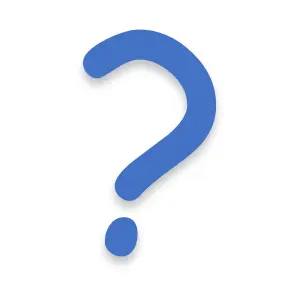It seems like with the current progress in ML models, doing OCR should be an easy task. After all, recognizing handwritten numbers was one of the prime benchmarks for image recognition (MNIST was released in 1994).
Yet, when I try to OCR any of my handwritten notes all I ever get is a jumbled mess of nonsense. Am I missing something, is my handwriting really that atrocious or is it the models?
Here’s a quick example, a random passage from a scientific article:

I tried EasyOCR, Tesseract, PPOCR and a few online tools. Only PPOCR was able to correctly identify the numbers and the words “J.” and “Chem.”. The rest is just a random mess of characters.
Edit: thank you all for shitting on my handwriting. That was not asked for, and also not helpful. That sample was intentionally “not nice” but is how I would write a note for myself. (You should see how my notes look like when I don’t need to read them again, lol)
chatGPT can transcribe it perfectly, and also works on a slightly larger sample. Deepseek works ok-ish but made some mistakes, and gemini is apparently not available in my country atm. I guess the context awareness is what makes those models better in transcription, and also why I can read it back without problems.


How else do you write them? Worth mentioning that I learned cursive in school and we had to write in cursive until like middle school when I then mostly transitioned to a happy mix of cursive and non-cursive
When I write them, I do the loop anticlockwise until I reach the ascender, continue the stroke straight up to drae the ascender, then back down to put the little tail down to the baseline or continue on to the next letter
Also if you’re not writing in cursive? I just checked some templates for kids to learn the letters, and at least the ones I’ve found do a circle first and then strike down. For example here. In cursive the materials I’ve found go halfway clockwise, then anticlockwise to complete the circle, up and down again like this.
I wonder whether this is something cultural.
This is crazy to me. I have never seen it before, it seems incredibly weird to me, but your evidence is hard to argue against.
My German is non-existent, but it seems to me that those two references can agree with this form for the lowercase d:
Of course, your second reference shows an initial stroke towards the top of the circle, but the rest of the stroke is one motion where the ascender double-backs on itself, completing the circle in a counterclockwise move that also starts the ascender. That is to say, the circle and ascender are naturally attached.
I could find only one reference which explicitly starts a new stroke for the ascender after completing the circle, but this example is from cursive, not from standard form:
If I had to guess, the impetus for not doubling back is to prevent the ascender from becoming messy, since writing over the same part of the page can cause smudging. And perhaps in hurried writing, this form lends itself to detaching the circle from the ascender. But I personally draw my cursive d with the ascender more akin to how cursive l is drawn, with a looping ascender, which preserves the attachment:
There is no ambiguity in cursive doing it this way, and for standard form, it saves a lift from the paper.
Seeing as drawing the d with its circle separated from the ascender requires a lift, and also becomes ambiguous from an O and an L, I’m not entirely sure how that form would be clearer to read. Context of the language means there’s usually no issue of confusion between a D or OL, but that doesn’t necessarily mean the drawn form is clear to read, which is going to mess up any OCR system prior to performing spell checking.
But some pathologal examples might include “olay” vs “day” vs “0 day”.
That’s all very interesting. I might even consider re-learning the d (and the b for that matter).
Print and cursive doesn’t make much difference in the case of the letter ‘d’, either way you make the counter-clockwise circle, strike up, and trace the strike back down without lifting the pen or pencil.
In a single (but not smooth) stroke, like how one would write a (mirrored) h, but where you would end the h normally, you connect it back to the bottom of the stem instead.
That’s even weirder that you’d do ol for d then. I’d expect you to do a single stroke o, starting at the right hand side, but upon completing the o, continue straight up to make the stem of the d.
IMO a hallmark of messy writing should be the shortcuts taken to reduce the amount of lifts of the stylus for efficiency’s sake. You need to improve the efficiency of your sloppiness, to make things worse so it gets better 😂